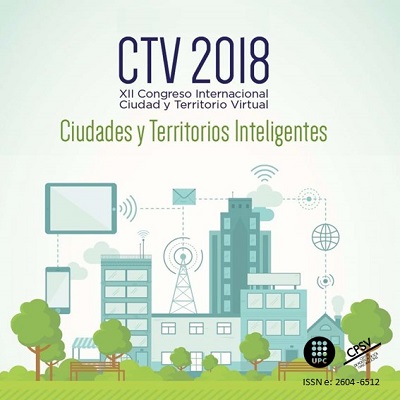Air Temperature in the Metropolitan Region of Barcelona from the Surface Temperature MODIS and Topo Geographic Data
DOI:
https://doi.org/10.5821/ctv.8251Keywords:
MODIS, air temperature, NDVI, NDBI, Multiple Regression, Barcelona Metropolitan RegionAbstract
The Metropolitan Region of Barcelona (RMB), is one of the most densely populated areas of the Mediterranean. Therefore, it is very interesting to know in detail the air temperature, since in extreme situations, such as cold or heat waves, it can affect the health and life quality of the population. Since the number of thermometric stations currently available is insufficient for optimal spatial interpolation, we choose to estimate the air temperature based on the surface temperature provided by the MODIS satellite, and other variables such as the indices of vegetation and building and topo geographic variables. For this purpose, Multiple Regression has been performed, taking as dependent variables the minimum, mean and maximum daily air temperatures of 48 thermometric stations. The independent variables of the regression are: the day and night surface temperatures, the NDVI and NDBI indices, all of them corresponding to the year 2015, and topo geographic variables such as latitude, longitude, distance to the sea, altitude, slope and orientation. In addition, the calendar day has also been taken into account. From the results obtained in the multiple regression, it can be deduced that the most important variables in the equation are: the temperature at night, latitude, longitude and calendar day, for the case of the minimum temperature; the night and day temperatures on the surface for the average temperature, and the night and day temperatures on the surface, latitude, longitude and altitude, for the maximum temperature. The squared regression coefficients obtained are 0.92 for the minimum and maximum temperature and 0.96 for the average temperature. The average square errors obtained are 1.93 ºC for the minimum temperature, 1.96 ºC for the average temperature and 2.04 ºC for the maximum. After applying the multiple linear regressions, the spatial distribution of the daily temperature of the RMB can be represented with a resolution of 1 km2, which is the provided by the MODIS satellite.
























